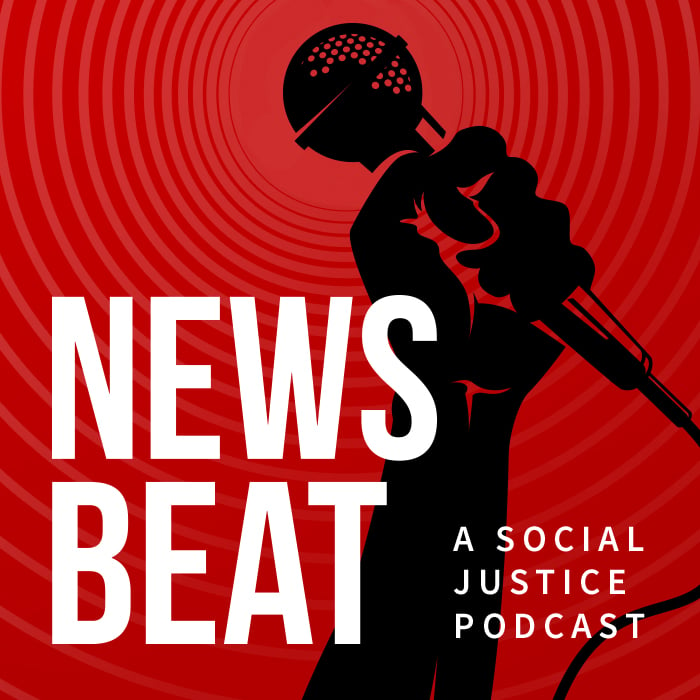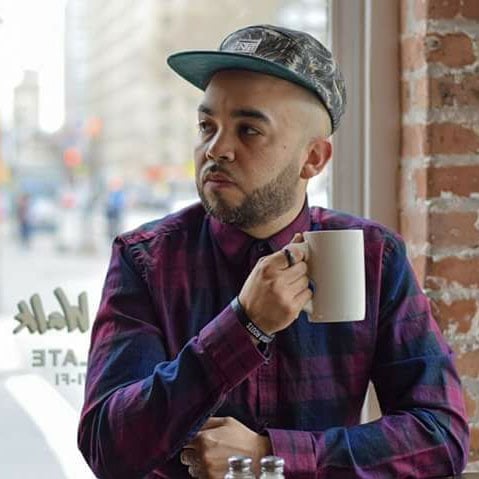This episode of News Beat podcast was created in partnership with The Marshall Project, a non-profit news organization based in New York City dedicated to award-winning journalism covering the U.S. criminal justice system. Visit its site to read more of TMP’s work and its series about prison reform in The Golden State, aptly titled “The California Experiment.”
What began as a response to court intervention, including a U.S. Supreme Court mandate to substantially reduce prison overcrowding, has morphed into a wide-ranging set of initiatives addressing everything from police accountability to mass incarceration.
California is hardly alone in such an undertaking. Still, its legislative ambitions, combined with contentious issues confronted by lawmakers and smaller municipalities, such as the city of Stockton, has put the state at the forefront of this movement. A 2018 law abolishing cash bail, implementation of which has stalled pending a statewide referendum, is just one example of how the state is endeavoring to make a dramatic change.
In 2011, California voters approved AB 109, also known as “realignment,” in response to a U.S. Supreme Court ruling. In a 5-4 decision, the justices ordered dramatic cuts to the state’s prison population, which ballooned to 165,000 in 2006. By 2016, the number of inmates in state penitentiaries fell 25 percent, to about 110,000. The precipitous decline was largely the result of policies enacted under AB 109, which diverted prisoners convicted of certain crimes to local jails.
Beyond addressing its once-infamous overcrowding problem, the state has adopted a medley of new reform-inspired laws: Prop 47 in 2014, which reduced sentences for low-level drug and property crimes; Prop 57 in 2016, which expanded parole eligibility for non-violent criminals; SB 1437, which effectively eliminated the so-called “felony murder rule;” and others.
Whether these mushrooming measures have made California safer is a matter of constant—and passionate—debate.
One thing, however, is clear: Crime in California is at historic lows, according to experts. But researchers are hesitant to assign credit—or blame—to the assortment of new policies, given the complexities of the criminal justice system, especially in a state as sprawling as California—numbering 58 counties and a population approaching 40 million.
Not surprisingly, reform remains a flashpoint. Some district attorneys strongly object to the gutting of the so-called “felony murder rule” and the powerful bail industry successfully petitioned the state to hold a public vote on a bail reform bill, known as SB 10, that then-Gov. Jerry Brown signed into law last year.
Initially endorsed by leading grassroots and reform organizations, many of SB 10’s key co-sponsors withdrew their support. They questioned whether the newly adopted framework, built around a controversial algorithmic risk assessment system, represents meaningful bail reform.
The push to effectively eliminate bail, along with the growing list of laws and policies intended to dismantle mass incarceration, are prime examples of what non-profit news organization The Marshall Project has dubbed, “The California Experiment.” To highlight California’s prominence in the reform movement, News Beat podcast collaborated with The Marshall Project to further shine a light on California’s ambitious path forward, and to better understand how the state could become a model for the rest of the country.
Related: How Supporters of Historic California Bail Abolition Bill Became Some Of Its Strongest Critics
“California looks a lot like the nation,” Mia Bird, research fellow at the Public Policy Institute of California (PPIC), tells News Beat podcast. “And so there’s a lot to be learned from the California experience, but I certainly think across the country, you know, California may have been a bit on the leading edge because of circumstances and prison overcrowding, but across the country these are conversations that are being had and there’s legislation moving forward just to try to make the criminal justice system more cost effective and more equitable.”
Going Back to Cali’s Past
The United States continues to incarcerate higher rates of its own citizens than any other country in the world. But inmate populations have declined in recent years, largely due to substantial reductions inside a half-dozen states, including California.
How the Golden State got to this point is a story that has resonance across the country.
For decades, and especially through the ’80s and ’90s, tough on crime policies prevailed, buttressed by the so-called “War on Drugs”—a period characterized by a massive uptick in jail and prison populations, with minorities and women increasingly being locked up.
California mirrored this national trend, according to Bird. In 1994, the state enacted a controversial “Three Strikes” sentencing law, which meant anyone who committed three felonies—even one considered minor—was automatically sentenced to at least 25 years to life. The law, amended in 2012 to make the third “strike” a serious or violent felony, remains on the books.
By 2006, California’s prisons—designed to hold 80,000 people—saw its inmate population surge to 160,000, double the maximum capacity. That year, then-Gov. Arnold Schwarzenegger, a Republican, declared a state of emergency inside the prisons in order to take “immediate action” to prevent death.
This is around the same time that, according to Bird, the state began having honest conversations about “what it means to incarcerate this large a share of the population.”
The Supreme Court’s decision in the case of Brown v. Plata outlined troubling conditions that endangered the lives of California’s inmates. Among these: Prisoners with mental illness were not receiving adequate mental health care, with some having to wait as long as a year for treatment; the suicide rate inside prisons was nearly 80 percent higher than the national average; and overcrowding put such strains on the system that, according to a special three-judge court that originally reviewed the case, “constitutionally compliant” conditions would not be achievable until the thronged conditions were addressed.
“This shortfall of resources relative to demand contributes to significant delays in treatment,” Justice Anthony Kennedy, who has since retired, wrote in the majority opinion. “Mentally ill prisoners are housed in administrative segregation while awaiting transfer to scarce mental health treatment beds for appropriate care. One correctional officer indicated that he had kept mentally ill prisoners in segregation for ‘[six] months or more.’”
Abbie VanSickle is a staff writer at The Marshall Project, where her work on California’s prison reform movement is part of an ongoing series called “The California Experiment.” VanSickle, as with others closely monitoring the implications of newly adopted laws and initiatives, says California’s eagerness to pursue change can clearly be traced back to the court’s mandate nearly a decade ago.
“It set in motion a sort-of series of changes in the way that the state’s prisons worked in who was held and for how long, and eventually how people could gain early release,” she tells News Beat podcast.
Reform
It all started with AB 109—or more popularly known as “realignment.”
As VanSickle notes in the podcast, AB 109 essentially moved people with nonviolent, nonsexual and nonserious convictions out of prisons and into the custody of county jails. That meant the onus was on each individual county to figure out the best way to absorb low-level offenders into their respective systems, and come up with plans to reduce recidivism—AB 109’s ultimate goal.
According to Bird, the law also included funding for local jurisdictions to develop “evidence-based practices.”
“That’s really when we started to see the prison population come down in California,” she tells News Beat podcast.
Along with lessening the degree to which people with non-serious felonies would serve their time in prison, AB 109 also “very importantly…prevented revocations to prison for most individuals who are leaving prison,” Bird notes. “And this meant that if they were picked up for misconduct they either needed to be formally processed through the court system and reconvicted of an offense or they needed to be revoked and serve that revocation term locally.
The was significant, Bird says, because not only did it alleviate the pressure on prisons, but overall incarceration levels also fell.
California no longer had “that sort of revolving door that had perpetuated the size of the prison population in California,” she explains. “And what we saw as a result was really a dramatic decline in the prison population. And that wasn’t surprising given that the rules directly affected who could go to prison. But we also saw an overall decline in incarceration. And so that’s to say the jail population just didn’t increase at the same level that the prison population was reduced.”
Bird credits these improvements to a system of incentives and funding mechanisms contained in the law. Even as local jurisdictions’ justice systems were expanding, they were able to tap into government funds that allowed them to individually pursue projects that reduced incarceration and correctional costs, she says.
Bird joined PPIC in 2012, just as California was beginning a massive wave of reforms. Along with her colleagues, Bird has helped spearhead an effort to gather data and analyze “realignments” impact.
But getting to that point was no easy task—and still isn’t. As this reform movement was hitting its stride, the state was experiencing a “huge data gap,” Bird says. Critical information was “siloed,” she adds, so much so that crucial data points were not traveling upstream, making it nearly impossible for the county to conduct its own analysis.
“Even just to evaluate a policy like ‘realignment’ or many of the subsequent policies that have followed in this era of reform, you really needed to bring state and local data together in order to do that,” Bird continues.
“What we were able to learn based on those data is that realignment didn’t have—as some people feared—it didn’t have huge effects on crime rates and it didn’t actually have any negative effects on specifically violent crime rates,” she explains. “And that’s what folks were really worried about. If you reduced incarceration and in some respects to reduce the turn of going to prison, would we see a big increase in crime and would we see a big increase in particularly violent crime?”
Even still, it’s “notoriously difficult” to draw conclusions from crime statistics, says VanSickle.
“What I can say, we did look at crime data in California for the last couple of decades, and what we see now is that crime remains at historic lows in California,” she says. But to her larger point, VanSickle says crime rates were up in some counties and down in others, which is why researchers often scoff at making generalized conclusions about crime rates and the effect specific laws have had on public safety.
Stockton Rising
It wasn’t that long ago when the city of Stockton was famous for all the wrong reasons. The city, nestled in San Joaquin County, once had a murder rate that rivaled Chicago, and in 2012 became the largest American city to file for bankruptcy, still gripping from the economic downturn four years prior.
Stockton has been on a long, arduous road to recovery. But the city with a population of 310,000 has found its footing—swagger, even—thanks to an infusion of youth, pride, and chutzpah radiating off its 28-year-old mayor.
When Michael D. Tubbs, the former councilman and Obama White House intern, took up the reigns at city hall in 2017, he became the city’s first black mayor and the youngest ever to hold the position.
Tubbs is also somewhat of a celebrity mayor. He has made the rounds on national television to champion the city’s Universal Basic Income (UBI) experiment. Under the program, a random group of residents each month receive a $500 preloaded debit card with the freedom to spend as they wish.
Tubbs’ goals are ambitious, perhaps even audacious. The UBI trial is one of many threads he’s pulling—seemingly all at once—so he can leave Stockton in a better place than how he found it, and that includes undoing generational challenges: poverty, poor education, and violence.
While lawmakers statewide are seemingly committed to ending mass incarceration, jurisdictions like Stockton are doing their part as well, just on a more granular level.
On Jan. 1, Tubbs published a celebratory tweet in which he announced that the city had reduced homicides and shootings by 40 and 30 percent, respectively. Most local leaders often take time to celebrate a decline in violence—after all, lawmakers want to keep their communities safe. But for a mayor whose return to Stockton was spurred by a horrific act of violence, this was deeply personal.
Tubbs was a junior at Stanford University when he landed an internship at the White House’s Office of Intergovernmental Affairs. Throw in a stint at Google, and Tubbs was on a path toward success—something that eluded many of the people he knew back home in Stockton.
Then everything changed. Tubbs cousin was fatally shot, and that proved to be a “tipping point” for him, he tells News Beat podcast.
After his cousin’s untimely death, Tubbs did a lot of “soul searching,” he says, which helped him uncover a harsh reality: “There was countless families in this country and countless of my community that felt the same pain and anger.”
When he returned home, Tubbs ran for city council, and won. Preventing gun violence has been an obsession of his ever since.
Among the most controversial initiatives has been the city’s partnership with anti-gun violence nonprofit Advance Peace, which the council approved last year. The program identifies residents most likely to commit violence and provides them with support networks and includes daily check-ins with mentors and job training. After six months in the program, participants are eligible to receive a stipend of up to $1,000—undoubtedly the most contentious aspect of the initiative.
Tubbs has also promoted the Office of Violence Prevention, which includes Operation Ceasefire and Peacekeepers, a mentoring program for at-risk youth.
The city’s holistic approach to stamping out gun violence comes as it is also bolstering its police department, which now has a record number of officers.
Tubbs envisions a city in which the police work is part and parcel of a broader crime-reduction strategy.
“For the past 30 years, Stockton has been double or triple the state average consistently for gun violence and homicides. When I was elected to city council, we had 71 homicides, which was more per capita than Chicago at the time. Unacceptably high rates of violence,” Tubbs says. “We now have more police officers than we ever had. But we also have an understanding that cops in and of itself are necessary but not sufficient. That the cops don’t do prevention work, they come in after a crime has been committed. But there’s a lot of upstream factors and indicators we can use to figure out who is it that’s going to drive gun violence in our community. And figure out how do we streamline our institutions so they track those signs early so we don’t have to go to enforcement to create change.”
For Tubbs, his city, and the state itself, the work never ends.
When we spoke with Tubbs in late April, the preceding weekend had been especially violent, with three recorded homicides in as many days. Tubbs and his staff were going to spend the rest of the week strategizing about how they could improve.
“It’s not a sexy topic,” he explains. “It’s not one to easily win on. But it’s one I’m committed to making sure that by the time I leave as mayor of Stockton, we’re on a trend towards a steady decline in gun violence.”











